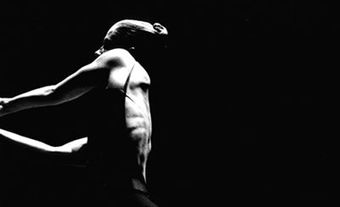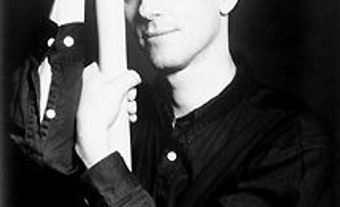John Henry Walker, wood engraver, illustrator (born 1831 in Ballamony, Northern Ireland; died 1899 in Montréal, QC). John Henry Walker produced illustrations for a number of Canadian comic journals, including Grinchuckle, Punch in Canada and Diogenes. He also produced temperance advertisements and temperance pledges, although he was not a temperance advocate. In his unpublished history, Wood Engraving in Canada, Walker expressed bitterness over the fact that wood engraving was not perceived as art, particularly in his adopted home city, Montréal.
Early Life and Training
John Henry Walker was born in Ballamony, County Antrim, in Northern Ireland. His family immigrated to what is now Canada in 1824, moving briefly to Rochester, New York, then to Montréal. In 1845, he was apprenticed for three years to the engraver Cyrus A. Swett, under whom he was trained in copper and wood engraving. Walker entered the apprenticeship after his mother sent Swett some of her son’s drawings. In 1848, Walker followed Swett to Boston; he remained there for five months, eventually returning to Montréal. He was based in Montréal for most of his career, with a short sojourn in Toronto, where he produced illustrations for the short-lived Punch in Canada (1849–50), which was named after the English comic periodical begun in 1841. Walker wrote in 1886 that Thomas Blades de Walden founded the journal, but more recently Peter Desbarats and Terry Mosher have stated that Walker was the editor and founder.
Career
Walker produced illustrations and cover images for several comic journals in the 19th century. These periodicals included Grinchuckle, a Montréal-based journal of political satire. Grinchuckle was originally the pseudonym of William Workman (1807–78), Montréal’s mayor, when he wrote for the comic journal Diogenes (1868–70; published by George Burden), to which Walker also contributed illustrations, including the cover image.
Walker wrote his unpublished text, Wood Engraving in Canada,by hand on the blank pages at the back of J.W. Linton’s Wood Engraving in America on 4 April 1886. Although Walker set out to describe the history of wood engraving in Canada, the 10 pages of manuscript are actually a record of his career and resentments. He had become disillusioned because of the way wood engraving was perceived in Canada and he listed some of his grievances in his handwritten text.
For instance, Walker was resentful toward the Art Association of Montreal (AAM), for whom he produced a portrait of Christ. This wood engraving was produced either for the association’s first exhibition in 1860 or for its second one, in 1864. Walker recalled that he was required to submit both the cut and the proof, and that the print had been attached to the wall of the exhibition space with a pin. After the show, Walker found it on top of a cupboard. Because of this experience, he decided that he would never again participate in an organized art exhibition.
Walker believed strongly that wood engraving was an art form. He believed that the bias against wood engraving was particularly bad in Montréal, and he observed that “wood engraving in the city of Montréal at the present time — 1886 — and for some years back, takes the lowest stand of any city in Canada.” Nonetheless, Walker continued to produce wood engravings as his primary source of income. He created hundreds of engraved advertisements for a range of Montréal clients as well as his illustrations for the covers and inside pages of Grinchuckle, Punch in Canada, Canadian Illustrated News and Diogenes.
One of his illustrations, The Pipe versus the Bottle, is an engraving that represents the first prime minister of Canada, Sir John A. Macdonald (1815–1891), and temperance advocate and newspaper editor John Dougall (1808–1886) apparently drinking together. The image was published in the illustrated comic journal Grinchuckle on Thursday 28 October 1869, accompanied by a poem. The poem’s narrator, “a Witness,” alludes to Dougall’s newspaper the Montreal Witness. Walker resented Dougall, although his bitterness toward the newspaper editor began after he depicted Dougall in The Pipe versus the Bottle. According to Walker, Dougall was one of his best patrons for many years after about 1856, but in its special “Carnival” number of 1885, the Montreal Witness refused to identify Walker as an artist.
Walker also created many engravings for the temperance movement, including temperance pledges and an advertisement for the temperance cause, but he also produced advertisements for companies such as G. Reinhardt and Sons LagerBeer. Walker moved to Toronto briefly to produce illustrations for Punch in Canada in 1849–50. When that comic journal ceased production, he began creating woodcuts for a variety of clients, including Sons of Temperance lodges.Walker’s connection with the temperance movement appears then to have been based on opportunity rather than moral belief.
Influences
In one of Walker’s scrapbooks held by the McCord Museum of Canadian History, Walker pasted an engraved portrait from an unidentified and undated newspaper on one of the later pages. The portrait depicts a middle-aged man who is identified as “The Late George Cruikshank.” Cruikshank (1792–1878), a British graphic satirist, was well-known during his lifetime, particularly for his political satires. Cruikshank also produced a series entitled The Bottle in 1847 and a sequel series, The Drunkard’s Children, in 1848. Both series represent the downfall of a family due to the patriarch’s, and then the children’s, alcohol consumption.
A poor-quality version of Cruikshank’s The Bottle appeared in 1851 under the title The Story of Latimer in the Canada Temperance Advocate, which was edited by John Dougall. It seems likely that Walker would have seen The Story of Latimer, but it is unknown whether he was aware of its original source at that time. The fact that Cruikshank may have been a source of inspiration for Walker is significant in light of the fact that Walker also produced several images related to temperance and drunkenness.
Like Cruikshank’s later work, Walker’s images of drunkenness are usually serious rather than satirical. In addition to the temperance pledges, Walker produced a wood engraving entitled Genre Scene in 1848 — the same year that Cruikshank produced The Drunkard’s Children — which depicts a family in a small hovel-like space. An empty bottle rolls from the man’s hand and the two children huddle against their mother. This depiction — of a drunken father and a temperate mother — was typical for 19th-century temperance art.

 Share on Facebook
Share on Facebook Share on X
Share on X Share by Email
Share by Email Share on Google Classroom
Share on Google Classroom


